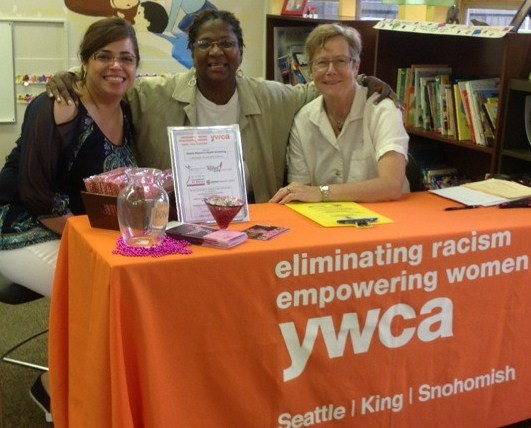Most of the time, we talk about physical health on this blog. Another type of health is our financial health.
I’m sure you already know that our financial health impacts our physical health. How much money we make impacts the quality of food we are able to buy. Having a stable job makes it possible for us to pay our rent or mortgage on time each month, keeping a roof over our heads and our bodies protected from the outdoors. And it goes on…
At the YWCA, some of the work we do is around building economic resilience. Here are a couple programs to check out:
- Hope and Power for Your Personal Finances: This is a 10-session financial education class/support group for survivors of domestic violence. We provide childcare, transportation assistance (either gas cards or bus tickets), and food as a way to help reduce the barriers for survivors to attend. This year, we are partnering with other domestic violence agencies to teach them how to offer the classes. We don’t have our schedule quite set for the rest of the year, but clients can call Hannah Haag at any time to get put on our waiting list. Then we’ll contact them directly when we have a class scheduled. Hannah can be reached at hhaag@ywcaworks.org or 425-264-1406.
- Money Mechanics: These are our newer 4-session financial education classes that are open to anyone. They are designed for people who are low-income, unemployed, or currently or recently homeless, but there are no eligibility requirements and anyone can attend. The next classes will be in Seattle and starting in May. For more information about the Money Mechanics classes please contact Constance Francis: cfrancis@ywcaworks.org or 425-264-1416.
There are also other resources available in the community outside of the YWCA. Some of our favorites are the Financial Empowerment Centers in Seattle and BankOn Seattle.
 The Financial Empowerment Centers (FECs) provide FREE financial counseling. They can assist you with banking, credit, debt management and reduction and preparing for short and long term financial goals. Scheduling an appointment is easy! Counselors are located at agencies throughout the city of Seattle, including at YWCA Opportunity Place. You or your client can access the online appointment scheduler by clicking here. Also – counselors speak many languages! When you open the online appointment scheduler you can clearly see when and where each language is available.
The Financial Empowerment Centers (FECs) provide FREE financial counseling. They can assist you with banking, credit, debt management and reduction and preparing for short and long term financial goals. Scheduling an appointment is easy! Counselors are located at agencies throughout the city of Seattle, including at YWCA Opportunity Place. You or your client can access the online appointment scheduler by clicking here. Also – counselors speak many languages! When you open the online appointment scheduler you can clearly see when and where each language is available.
 BankOn Seattle is a partnership of banks, credit unions, and community organizations that can help you open free or low-cost checking and savings accounts. The program is especially focused on those who don’t have a banking relationship, including 2nd chance accounts for those who have had trouble with banks in the past. On their website you can find a list of financial institutions that participate, comparison charts of their accounts (in multiple languages!), a list of financial education providers and a calendar of classes. Want to learn more about what bank, credit union or community organization could be a good fit for you, click here and select your preferred language.
BankOn Seattle is a partnership of banks, credit unions, and community organizations that can help you open free or low-cost checking and savings accounts. The program is especially focused on those who don’t have a banking relationship, including 2nd chance accounts for those who have had trouble with banks in the past. On their website you can find a list of financial institutions that participate, comparison charts of their accounts (in multiple languages!), a list of financial education providers and a calendar of classes. Want to learn more about what bank, credit union or community organization could be a good fit for you, click here and select your preferred language.
What is the ONE THING you can do to take a step towards financial health?
Let us know if we can help.
Thank you to YWCA Economic Resilience Initiative for providing the content for this blog post.







